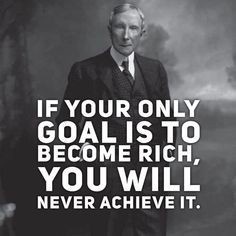
John D. Rockefeller was not a man who shied away from a challenge. He was a man who saw opportunities where others saw obstacles, who pursued his goals with relentless determination, and who built an empire that changed the course of history. He was also a man who treated business like war, who used every means at his disposal to crush his competitors, who manipulated the markets and the government to his advantage, and who amassed a fortune that made him the first billionaire in America. This is the story of his business life, from his humble beginnings as a bookkeeper to his rise as the king of oil.
The Early Years
Rockefeller was born in 1839 in Richford, New York, to a father who was a traveling salesman and a mother who was a devout Baptist. He grew up in a large family that moved frequently, settling in Cleveland, Ohio, in 1853. He showed an aptitude for numbers and business from an early age, and at 16 he got his first job as an assistant bookkeeper. He saved his money diligently, and at 20 he entered into his first business partnership, a commission firm that dealt in various commodities. He soon realized that the oil industry, which was booming in western Pennsylvania, offered a lucrative opportunity. In 1863, he built his first oil refinery near Cleveland, and within two years it became the largest in the area. He then decided to focus exclusively on the oil business, and in 1870 he incorporated the Standard Oil Company of Ohio, with himself as the president and his brother William as the vice president.
The Standard Oil Trust
Rockefeller had a vision of creating a vertically integrated oil company that would control every aspect of the industry, from production to transportation to refining to marketing. He also had a strategy of eliminating his rivals by either buying them out or driving them out of business. He used various tactics to achieve this, such as secret rebates from railroads, price wars, predatory pricing, espionage, sabotage, and intimidation. He also formed alliances with other powerful businessmen, such as Henry Flagler, John Archbold, and Henry Rogers, who shared his vision and ambition. By 1880, Standard Oil controlled 90% of the oil refining capacity in the U.S., and had a near-monopoly on the oil market. To avoid legal challenges from the states where it operated, Rockefeller devised a scheme to create a trust, a legal entity that would hold the stock of all the companies under his control. In 1882, he formed the Standard Oil Trust, which consisted of 40 companies and had a board of nine trustees, with Rockefeller as the chairman. The trust was able to evade state laws and regulations, and to operate as a single entity across the country.
The Antitrust Crusade
Rockefeller’s success and power did not go unnoticed or unchallenged. He faced opposition from various quarters, such as independent oil producers, consumers, journalists, politicians, and reformers. He was accused of being a monopolist, a robber baron, a ruthless tyrant, and a public enemy. He was also the target of several investigations and lawsuits, both at the state and federal level, that sought to break up his trust and restore competition in the oil industry. One of his most formidable adversaries was Ida Tarbell, a muckraking journalist who wrote a series of articles exposing the shady practices and abuses of Standard Oil. Her articles were later published as a book, The History of the Standard Oil Company, which became a bestseller and a catalyst for the antitrust movement. In 1890, Congress passed the Sherman Antitrust Act, which outlawed any combination or conspiracy in restraint of trade or commerce. In 1892, the Ohio Supreme Court ordered the dissolution of the Standard Oil Trust, and Rockefeller reorganized his companies into a holding company, the Standard Oil Company of New Jersey. In 1906, the federal government filed a lawsuit against Standard Oil under the Sherman Act, and after a lengthy trial, the Supreme Court ruled in 1911 that Standard Oil was an illegal monopoly and ordered it to be broken up into 34 separate companies. Some of these companies later became Exxon, Mobil, Chevron, and Amoco, among others.
The Philanthropist
Rockefeller retired from active management of Standard Oil in 1897, but remained its largest shareholder and the richest man in America. He devoted his time and money to philanthropy, especially in the fields of education, medicine, and religion. He founded the University of Chicago, the Rockefeller Institute for Medical Research (later Rockefeller University), the Rockefeller Foundation, and the General Education Board. He also supported various Baptist institutions, such as Spelman College, the American Baptist Missionary Union, and the Baptist World Alliance. He gave away more than half a billion dollars in his lifetime, and was widely regarded as one of the greatest philanthropists in history. He died in 1937 at the age of 97, leaving behind a legacy that is still felt today.
Like✅comment💬 and follow
Thanks

3 Comments
Priti · February 19, 2024 at 7:21 pm
Wow! What an excellent person! Well shared👌
duosmaketers · February 21, 2024 at 10:11 pm
Pleasure
Priti · February 22, 2024 at 6:54 am
☺️